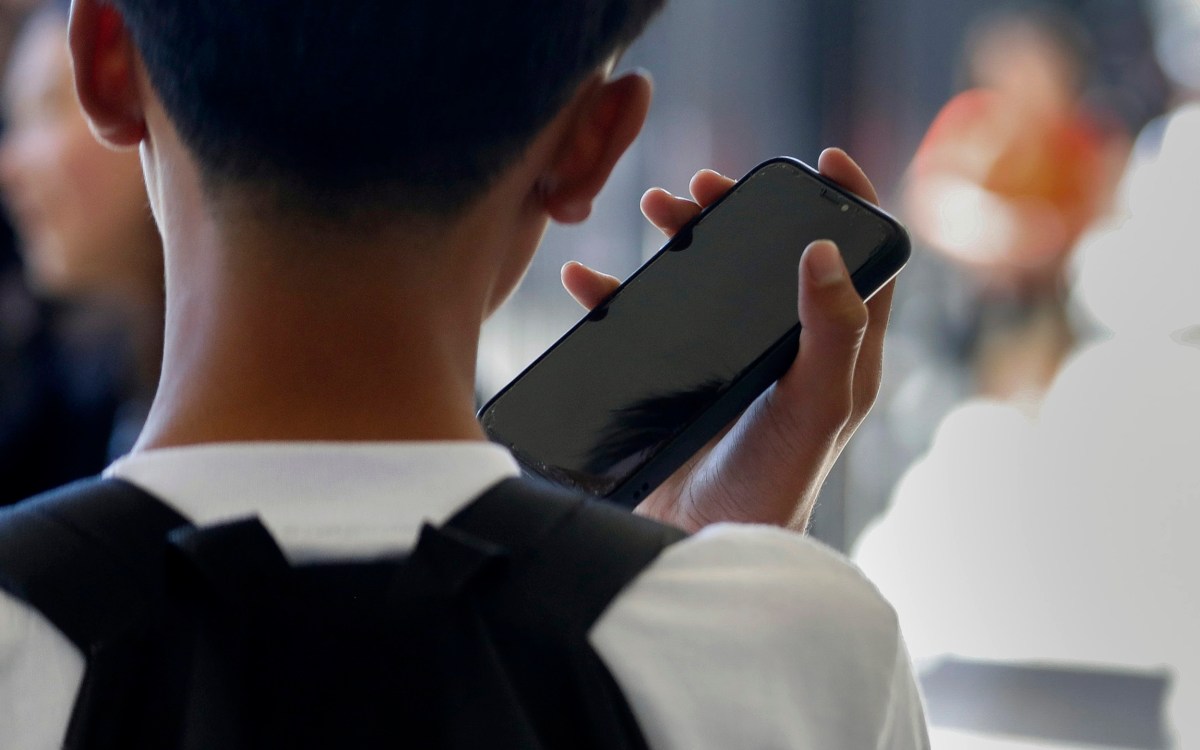Do phones belong in schools?

iStock by Getty Images
Bans may help protect classroom focus, but districts need to stay mindful of students’ sense of connection, experts say
Students around the world are being separated from their phones.
In 2020, the National Center for Education Statistics reported that 77 percent of U.S. schools had moved to prohibit cellphones for nonacademic purposes. In September 2018, French lawmakers outlawed cellphone use for schoolchildren under the age of 15. In China, phones were banned country-wide for schoolchildren last year.
More like this
Supporters of these initiatives have cited links between smartphone use and bullying and social isolation and the need to keep students focused on schoolwork.
77% Of U.S. schools moved to ban cellphones for nonacademic purposes as of 2020, according to the National Center for Education Statistics
But some Harvard experts say instructors and administrators should consider learning how to teach with tech instead of against it, in part because so many students are still coping with academic and social disruptions caused by the pandemic. At home, many young people were free to choose how and when to use their phones during learning hours. Now, they face a school environment seeking to take away their main source of connection.
“Returning back to in-person, I think it was hard to break the habit,” said Victor Pereira, a lecturer on education and co-chair of the Teaching and Teaching Leadership Program at the Graduate School of Education.
Through their students, he and others with experience both in the classroom and in clinical settings have seen interactions with technology blossom into important social connections that defy a one-size-fits-all mindset. “Schools have been coming back, trying to figure out, how do we readjust our expectations?” Pereira added.
It’s a hard question, especially in the face of research suggesting that the mere presence of a smartphone can undercut learning.
Michael Rich, an associate professor of pediatrics at Harvard Medical School and an associate professor of social and behavioral sciences at the Harvard T.H. Chan School of Public Health, says that phones and school don’t mix: Students can’t meaningfully absorb information while also texting, scrolling, or watching YouTube videos.
“The human brain is incapable of thinking more than one thing at a time,” he said. “And so what we think of as multitasking is actually rapid-switch-tasking. And the problem with that is that switch-tasking may cover a lot of ground in terms of different subjects, but it doesn’t go deeply into any of them.”
Pereira’s approach is to step back — and to ask whether a student who can’t resist the phone is a signal that the teacher needs to work harder on making a connection. “Two things I try to share with my new teachers are, one, why is that student on the phone? What’s triggering getting on your cell phone versus jumping into our class discussion, or whatever it may be? And then that leads to the second part, which is essentially classroom management.
“Design better learning activities, design learning activities where you consider how all of your students might want to engage and what their interests are,” he said. He added that allowing phones to be accessible can enrich lessons and provide opportunities to use technology for school-related purposes.
Mesfin Awoke Bekalu, a research scientist in the Lee Kum Sheung Center for Health and Happiness at the Chan School, argues that more flexible classroom policies can create opportunities for teaching tech-literacy and self-regulation.
“There is a huge, growing body of literature showing that social media platforms are particularly helpful for people who need resources or who need support of some kind, beyond their proximate environment,” he said. A study he co-authored by Rachel McCloud and Vish Viswanath for the Lee Kum Sheung Center for Health and Happiness shows that this is especially true for marginalized groups such as students of color and LGBTQ students. But the findings do not support a free-rein policy, Bekalu stressed.
In the end, Rich, who noted the particular challenges faced by his patients with attention-deficit disorders and other neurological conditions, favors a classroom-by-classroom strategy. “It can be managed in a very local way,” he said, adding: “It’s important for parents, teachers, and the kids to remember what they are doing at any point in time and focus on that. It’s really only in mono-tasking that we do very well at things.”





